Mark Holohan and his father Sammy were making the most of good harvest conditions when we visited, combining winter wheat yielding in the region of 4.5t/ac at 15% moisture.
Mark and his father farm in the region of 1,000 acres of combinable crops, the majority of which surround the home farm just outside Rathangan, Co Kildare.
During winter of 2020 the decision was made to upgrade the farm’s 2004 New Holland CX860 combine after a trouble-free 17 seasons.
Why New Holland?
“From when we bought the CX860 to when we sold it the farm had grown in size. In latter years, the workload had become quite an ask of one 17-year-old machine. If we were to keep it for another few seasons cutting what it had been, then it was going to need some of the major wear parts replaced in the near future,” Mark said.
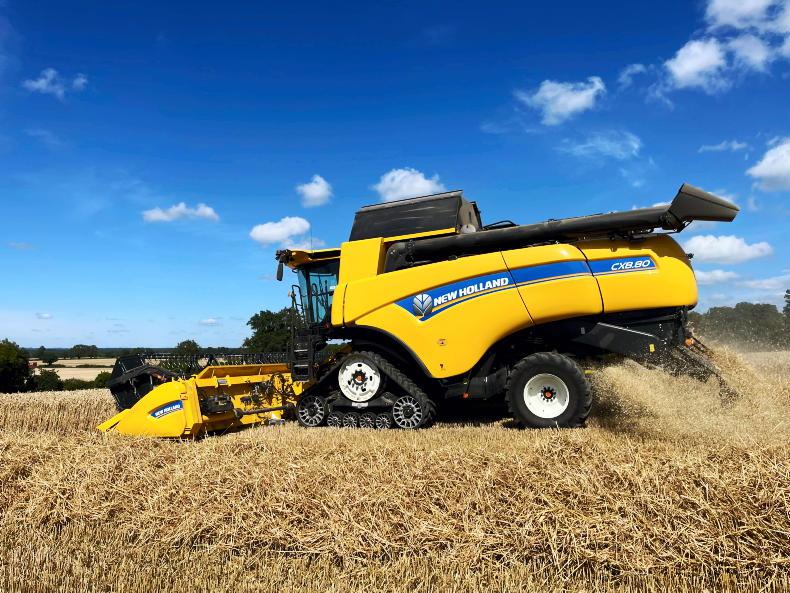
The CX8.80 is fitted with a Stage V FPT Cursor 9 engine producing a maximum 415hp.
Before the CX860 the Holohans had owned and operated a New Holland TX66 which was bought new in 1997. “Our first New Holland was a TX66. It too was a faultless machine and Perrys in Athy provided great service. It was probably one of the more comfortable machines of its day. They’re still a very sought-after combine.”
So, when it came to replacing the CX860, Mark’s preference was New Holland having an “if it’s not broke don’t fix it” kind of attitude. But with nearby dealer JR Perry no longer in business, the nearest New Holland combine dealer was Armstrong Machinery in Lusk.
“Having a dealer close by was one of the main reasons we went New Holland in the first instance. So with no dealer really any closer than the other we did consider some of the other options on the market as cost also played a major role in what we were going to buy.
“We priced another green brand which in fairness was competitive but we found it hard to walk away from New Holland given the service and low running costs we got from our previous machines. Aside from that, I always liked some of the features on the New Holland over other brands, the cab and grain returns system being two of the major ones.”
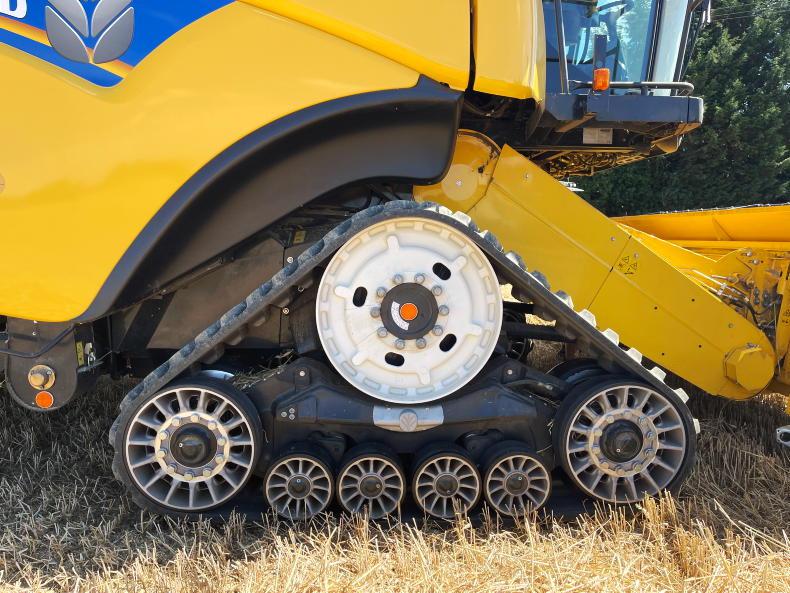
Given the added weight of the Varifeed header and narrow transport width he opted for the SmartTrax 610mm wide track units.
In the end Mark decided to stick with the yellow colours and did a deal for a full-spec CX8.80. “The CX8.70 was what we initially had in mind but we wanted a machine on tracks and therefore this meant moving up to the 8.80 as it was the only CX8 offered with tracks aside from the larger CX8.90.”

Mark is well impressed with the performance of the 760CG Varifeed 25ft header.
While the bare bones remain quite similar to his previous combine, the new machine is fitted with all the latest technology.
Header and tech
The Holohans stuck with a 25ft header but opted for the 760CG Varifeed model over the standard fixed type.
Mark identified crop flow through the header as one of the major improvements of the new machine. With crops and conditions being so good this season and last, he said that he hasn’t had the opportunity to get the full advantage out of the variable floor in tricky conditions such as laid crop.
The only downside of the Varifeed header is its additional weight – it is somewhere in the region of 700kg more than the fixed type. This was one of the key reasons for choosing tracks, with the extra stability and the large footprint. Retaining a narrow transport width was another factor.

The only sacrifice moving to tracks according to Mark has been the larger turning radius.
Considering that a new combine is a long-term investment, Mark decided to option it with yield mapping so that it is in some degree future proof.
“The fertiliser spreader and sprayer are variable rate and section control and now with the combine yield mapping, the final piece of the puzzle is to link the soil sampling programme in with it to get the full picture.
“This is something that’s inevitably coming and an area that an increased focus will be placed on in years to come.
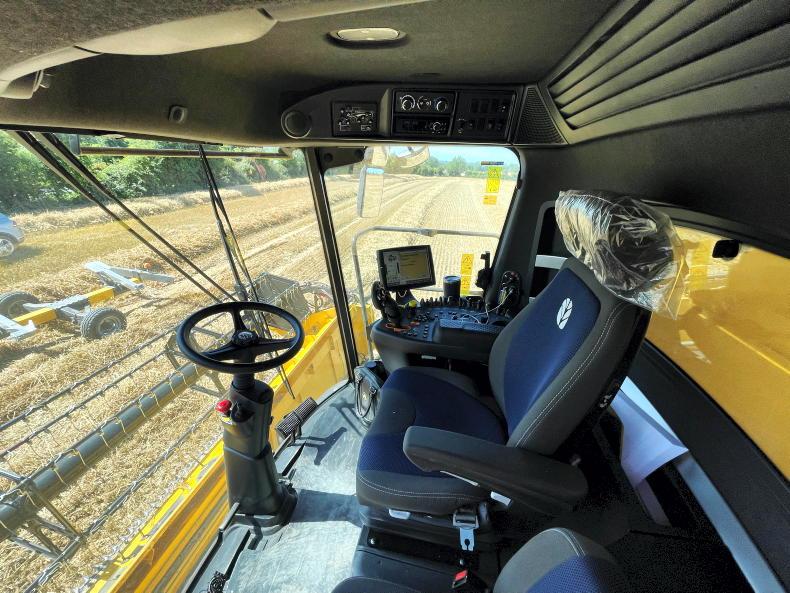
The visibility and space inside the cab has been a feature Mark always liked about his New Holland machines.
“The benefit is that we’ll be ready. It’ll be interesting even to compare this year’s maps with last year’s and compare some of the details such as yields, moisture and fuel consumption or even just the fuel consumption between a good year and a bad year weather wise.”
Mark’s combine is on the 610mm wide tracks, providing the narrowest overall width possible while 724mm and 864mm options are available. Suspension comes from two pairs of hydraulic suspended rollers, which work independently.
Some of the other options on the combine include GPS autosteer, grain moisture sensing, sectional drum concaves, and a self-levelling cleaning shoe as well as the full LED worklights and camera package.
Threshing and separation
At the start of the threshing process is the Ultra-Flow staggered drum. Introduced in 2020, it features offset rasp bars for smoother crop flow, lower fuel consumption and up to 10% greater capacity according to the manufacturer. Mark believes it is hard to quantify increased capacity or reduced fuel consumption not being able to compare it with the standard drum but he did say that the combine does run exceptionally smooth and quiet.
The CX8.80 features variable straw walkers. These are designed to keep consistent flow of material travelling over each of the six walkers for maximum separation. The system works by altering the speed of the walkers depending on the gradient of the field. Rather than just settling on a fixed speed which may often be too slow or too fast for a particular gradient, drive to the walkers can vary from 170 to 240rpm, compensating for gradients up to 17%.
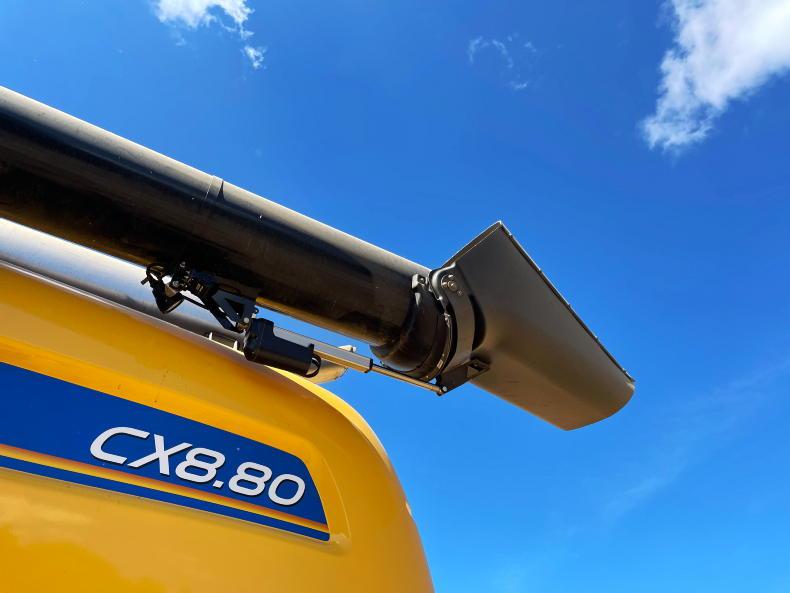
Mark likes the moveable unloading auger spout.
Two other features of the CX8.80 are the OptiFan and OptiClean systems. OptiFan automatically alters fan speed depending on the gradient while OptiClean is where the grain pan and lower sieve operate together to oppose the upper sieve motion for more aggressive threshing.
The self-levelling cleaning shoe came specified on Mark’s combine which he feels is a worthwhile feature for anyone working on hilly terrain but given that his land is relatively flat he hasn’t got to witness it working to the best of its ability.
Cab and controls
The New Holland cab has always been a standout like of Mark’s, complementing its quietness, space and visibility over the competitors. He described the InteliView IV terminal as well laid out and self-explanatory. “Having used most brands of GPS by now, this is probably one of the easiest setup. Everything else on the armrest is positioned where it needs to be, although the joystick on the old machine might have been better laid out, but it’s just a matter of getting used to it,” Mark said.
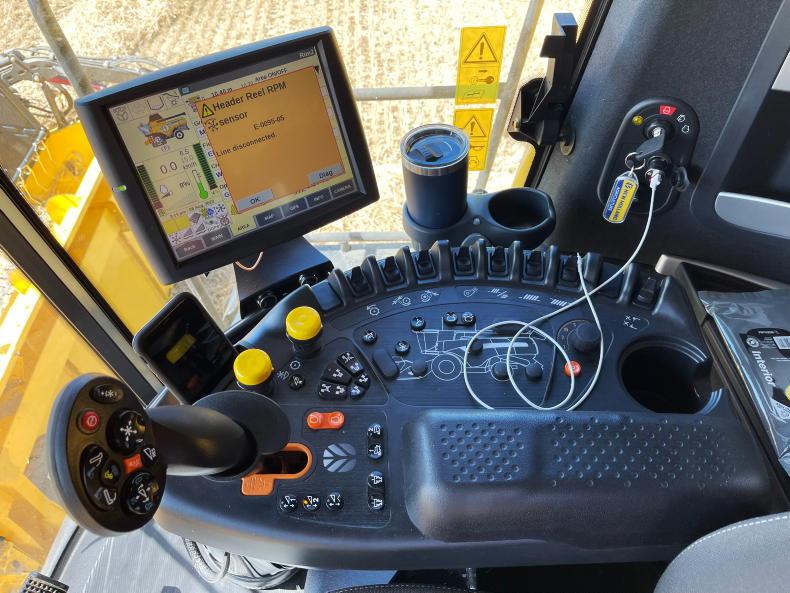
Controls and the terminal layout are two likes of Mark’s.
“It’s much more operator friendly compared to the 860. The automatic functions work well. You could set it up and leave it in the hands of an operator maybe not so familiar, whereas with the old CX860 you needed to know what you were at with it.
“The three cameras and adjustable spout are both great features that happened to come on the combine that we were going to do without. Having gotten used to the movable spout especially, I don’t think I’d buy another without it. It’s a smart piece of kit because when the spouts fold it tilts up to stop the spillage of any remaining grains in the auger.”
Verdict
“So far we can’t fault how the CX8.80 has performed. Having said that, we’ve had two very good harvests weather-wise – it’s often the tricky seasons where you find out really what a machine is like.
“Comfort and the header are the two major changes coming from the older machine. We never considered a rotary machine because we always sell a good quantity of straw to studs and for composting, and even though rotaries have come on we find it hard to beat the swath quality from a walker machine.
“ Although we could push the combine on harder, we don’t believe in racing up and down the field like some farmers or contractors. Instead, we’d rather sit at a constant 20t/hr all day every day with low losses and a clean sample. It is harder on fuel than the previous machine but we find that with all modern machines, although they burn cleaner they tend to be harder on fuel for it. While chopping, one 1,000l tank would typically last one and a half days compared to two days laying straw. A typical day at the moment for us is from 11am to 10pm. Moisture gets too high before and after that.
“The major benefit to the tracks I feel is the narrow transport width. After that the jury’s still out considering the additional investment over tyres. We haven’t had wet harvest conditions yet to really test them but from a stability aspect they are better. One thing that you do sacrifice moving away from tyres is a tight turning radius.

Mark Holohan, Rathangan, Co Kildare.
“All in all, we’re well impressed by the CX8.80 – nothing stops it. There’s quite a bit of tech on board which we maybe haven’t got the full advantage of yet but we will in time to come. For us, buying a combine is a long-term investment. Therefore, we want it to be future proof to the best extent.”
Engine: FPT
Cursor 9.
Rated horsepower: 374hp (415hp max).
Straw walkers:six.
Concave area:
1.18m2.
Header: 760CG Varifeed 7.6m (25ft).
Grain tank capacity: 11,500l.
Fuel tank capacity: 1,000l.
AdBlue tank capacity: 120l
Mark Holohan and his father Sammy were making the most of good harvest conditions when we visited, combining winter wheat yielding in the region of 4.5t/ac at 15% moisture.
Mark and his father farm in the region of 1,000 acres of combinable crops, the majority of which surround the home farm just outside Rathangan, Co Kildare.
During winter of 2020 the decision was made to upgrade the farm’s 2004 New Holland CX860 combine after a trouble-free 17 seasons.
Why New Holland?
“From when we bought the CX860 to when we sold it the farm had grown in size. In latter years, the workload had become quite an ask of one 17-year-old machine. If we were to keep it for another few seasons cutting what it had been, then it was going to need some of the major wear parts replaced in the near future,” Mark said.

The CX8.80 is fitted with a Stage V FPT Cursor 9 engine producing a maximum 415hp.
Before the CX860 the Holohans had owned and operated a New Holland TX66 which was bought new in 1997. “Our first New Holland was a TX66. It too was a faultless machine and Perrys in Athy provided great service. It was probably one of the more comfortable machines of its day. They’re still a very sought-after combine.”
So, when it came to replacing the CX860, Mark’s preference was New Holland having an “if it’s not broke don’t fix it” kind of attitude. But with nearby dealer JR Perry no longer in business, the nearest New Holland combine dealer was Armstrong Machinery in Lusk.
“Having a dealer close by was one of the main reasons we went New Holland in the first instance. So with no dealer really any closer than the other we did consider some of the other options on the market as cost also played a major role in what we were going to buy.
“We priced another green brand which in fairness was competitive but we found it hard to walk away from New Holland given the service and low running costs we got from our previous machines. Aside from that, I always liked some of the features on the New Holland over other brands, the cab and grain returns system being two of the major ones.”

Given the added weight of the Varifeed header and narrow transport width he opted for the SmartTrax 610mm wide track units.
In the end Mark decided to stick with the yellow colours and did a deal for a full-spec CX8.80. “The CX8.70 was what we initially had in mind but we wanted a machine on tracks and therefore this meant moving up to the 8.80 as it was the only CX8 offered with tracks aside from the larger CX8.90.”

Mark is well impressed with the performance of the 760CG Varifeed 25ft header.
While the bare bones remain quite similar to his previous combine, the new machine is fitted with all the latest technology.
Header and tech
The Holohans stuck with a 25ft header but opted for the 760CG Varifeed model over the standard fixed type.
Mark identified crop flow through the header as one of the major improvements of the new machine. With crops and conditions being so good this season and last, he said that he hasn’t had the opportunity to get the full advantage out of the variable floor in tricky conditions such as laid crop.
The only downside of the Varifeed header is its additional weight – it is somewhere in the region of 700kg more than the fixed type. This was one of the key reasons for choosing tracks, with the extra stability and the large footprint. Retaining a narrow transport width was another factor.

The only sacrifice moving to tracks according to Mark has been the larger turning radius.
Considering that a new combine is a long-term investment, Mark decided to option it with yield mapping so that it is in some degree future proof.
“The fertiliser spreader and sprayer are variable rate and section control and now with the combine yield mapping, the final piece of the puzzle is to link the soil sampling programme in with it to get the full picture.
“This is something that’s inevitably coming and an area that an increased focus will be placed on in years to come.

The visibility and space inside the cab has been a feature Mark always liked about his New Holland machines.
“The benefit is that we’ll be ready. It’ll be interesting even to compare this year’s maps with last year’s and compare some of the details such as yields, moisture and fuel consumption or even just the fuel consumption between a good year and a bad year weather wise.”
Mark’s combine is on the 610mm wide tracks, providing the narrowest overall width possible while 724mm and 864mm options are available. Suspension comes from two pairs of hydraulic suspended rollers, which work independently.
Some of the other options on the combine include GPS autosteer, grain moisture sensing, sectional drum concaves, and a self-levelling cleaning shoe as well as the full LED worklights and camera package.
Threshing and separation
At the start of the threshing process is the Ultra-Flow staggered drum. Introduced in 2020, it features offset rasp bars for smoother crop flow, lower fuel consumption and up to 10% greater capacity according to the manufacturer. Mark believes it is hard to quantify increased capacity or reduced fuel consumption not being able to compare it with the standard drum but he did say that the combine does run exceptionally smooth and quiet.
The CX8.80 features variable straw walkers. These are designed to keep consistent flow of material travelling over each of the six walkers for maximum separation. The system works by altering the speed of the walkers depending on the gradient of the field. Rather than just settling on a fixed speed which may often be too slow or too fast for a particular gradient, drive to the walkers can vary from 170 to 240rpm, compensating for gradients up to 17%.

Mark likes the moveable unloading auger spout.
Two other features of the CX8.80 are the OptiFan and OptiClean systems. OptiFan automatically alters fan speed depending on the gradient while OptiClean is where the grain pan and lower sieve operate together to oppose the upper sieve motion for more aggressive threshing.
The self-levelling cleaning shoe came specified on Mark’s combine which he feels is a worthwhile feature for anyone working on hilly terrain but given that his land is relatively flat he hasn’t got to witness it working to the best of its ability.
Cab and controls
The New Holland cab has always been a standout like of Mark’s, complementing its quietness, space and visibility over the competitors. He described the InteliView IV terminal as well laid out and self-explanatory. “Having used most brands of GPS by now, this is probably one of the easiest setup. Everything else on the armrest is positioned where it needs to be, although the joystick on the old machine might have been better laid out, but it’s just a matter of getting used to it,” Mark said.

Controls and the terminal layout are two likes of Mark’s.
“It’s much more operator friendly compared to the 860. The automatic functions work well. You could set it up and leave it in the hands of an operator maybe not so familiar, whereas with the old CX860 you needed to know what you were at with it.
“The three cameras and adjustable spout are both great features that happened to come on the combine that we were going to do without. Having gotten used to the movable spout especially, I don’t think I’d buy another without it. It’s a smart piece of kit because when the spouts fold it tilts up to stop the spillage of any remaining grains in the auger.”
Verdict
“So far we can’t fault how the CX8.80 has performed. Having said that, we’ve had two very good harvests weather-wise – it’s often the tricky seasons where you find out really what a machine is like.
“Comfort and the header are the two major changes coming from the older machine. We never considered a rotary machine because we always sell a good quantity of straw to studs and for composting, and even though rotaries have come on we find it hard to beat the swath quality from a walker machine.
“ Although we could push the combine on harder, we don’t believe in racing up and down the field like some farmers or contractors. Instead, we’d rather sit at a constant 20t/hr all day every day with low losses and a clean sample. It is harder on fuel than the previous machine but we find that with all modern machines, although they burn cleaner they tend to be harder on fuel for it. While chopping, one 1,000l tank would typically last one and a half days compared to two days laying straw. A typical day at the moment for us is from 11am to 10pm. Moisture gets too high before and after that.
“The major benefit to the tracks I feel is the narrow transport width. After that the jury’s still out considering the additional investment over tyres. We haven’t had wet harvest conditions yet to really test them but from a stability aspect they are better. One thing that you do sacrifice moving away from tyres is a tight turning radius.

Mark Holohan, Rathangan, Co Kildare.
“All in all, we’re well impressed by the CX8.80 – nothing stops it. There’s quite a bit of tech on board which we maybe haven’t got the full advantage of yet but we will in time to come. For us, buying a combine is a long-term investment. Therefore, we want it to be future proof to the best extent.”
Engine: FPT
Cursor 9.
Rated horsepower: 374hp (415hp max).
Straw walkers:six.
Concave area:
1.18m2.
Header: 760CG Varifeed 7.6m (25ft).
Grain tank capacity: 11,500l.
Fuel tank capacity: 1,000l.
AdBlue tank capacity: 120l













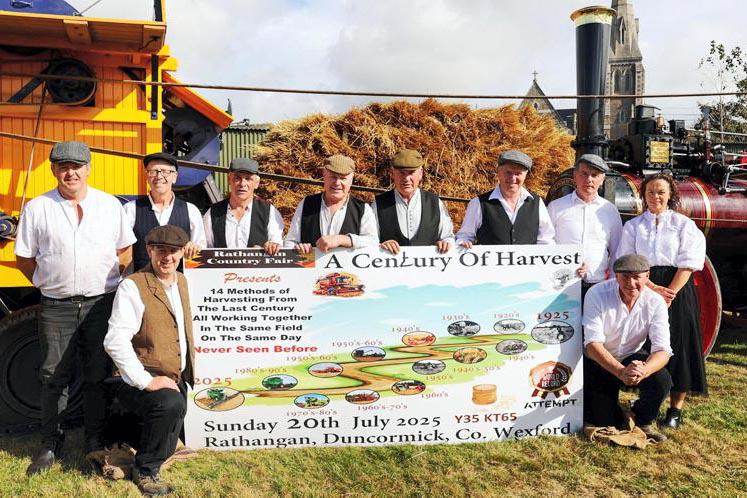


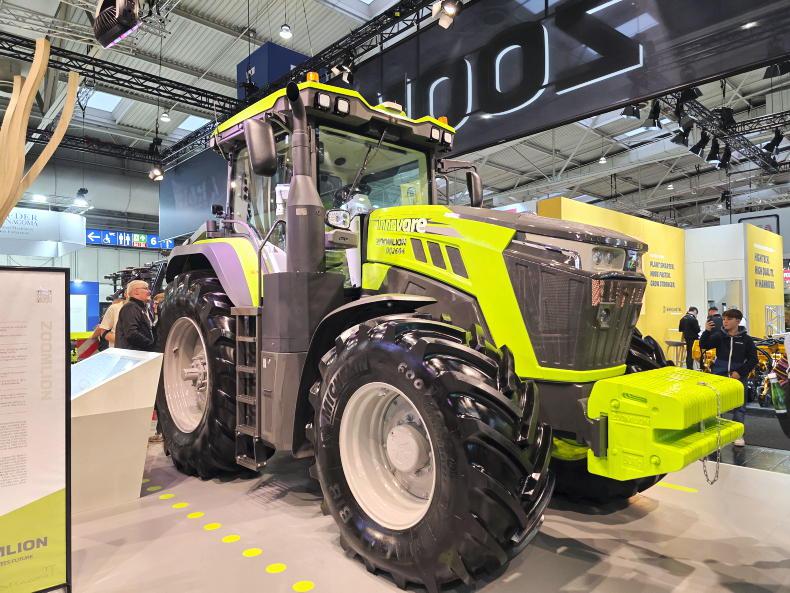
SHARING OPTIONS